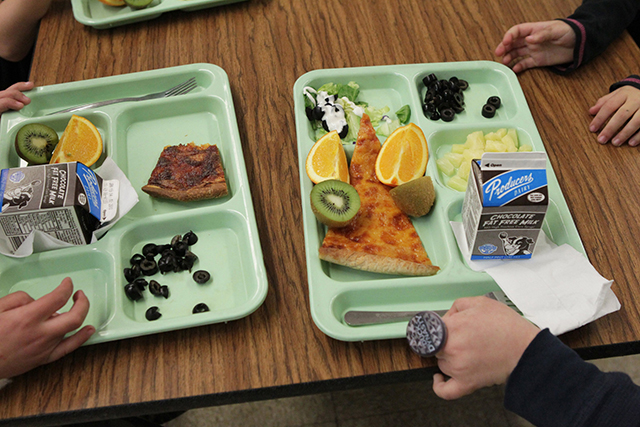School Lunch Program Results Show Why Government Shouldn’t Dictate What Kids Eat
Daren Bakst / Katie Tubb /
Maybe this is crazy, but the number one dietary concern when it comes to school lunches should be that kids actually eat lunch. For all the pep talks from Michelle Obama about her Let’s Move campaign and regulations from the USDA, it seems that this basic concern has been sacrificed for federal top-down policies that dictate every minutiae of what children should eat. This is the same federal government that was pushing Americans to eat a large amount of carbohydrates as part of the 1992 food pyramid. Unlike the pyramid though, the school lunch program isn’t a recommendation.
The independent Government Accountability Office (GAO) released in February a report on USDA’s changes to the National School Lunch Program for the 2012-2013 school year. These new changes required tighter and more detailed standards on what schools in the program must or cannot serve in order to participate in the program. The USDA is implementing the Healthy, Hunger-Free Kids Act of 2010, which required updated nutrition standards for lunches. These new standards have already led to:
- Decreased student participation: After more than a decade of steadily increasing student participation, the total number of students who ate school lunches dropped by 1.2 million students from the 2010-11 school year to the 2012-13 school year, a decrease of 3.7 percent (Page 15).
- Wasted food: States most frequently cited food waste as a challenge in implementing the USDA’s new requirements for the 2012-13 school year. Foods that students are required to take, particularly fruits and vegetables, are often just thrown away. (Page 25-27) The changes have been so unpopular that in one school district students at a middle school and a high school held a 3-week boycott of school lunch.
- Schools leaving the program: Three hundred and twenty-one School Food Authorities administering school district lunch programs in 42 states left the National School Lunch Program for the 2012-2013 school year. Twenty-seven of these states reported the new requirements were a factor in their decision. (Page 23) If taxpayers are forced to pay $11.6 billion as they did in 2012 for the school lunch program, it should at least be effective and certainly not so problematic that schools believe they are better off leaving the program.
GAO did conclude that the challenges “are expected to improve with the passage of time.” (Page 49). That really isn’t saying much given the scope of the problems. No amount of time is going to fix the inherent flaws of trying to impose extremely costly cookie-cutter standards that ignore the unique needs of students and restrict local school districts from providing healthy choices that will appeal to their students.

